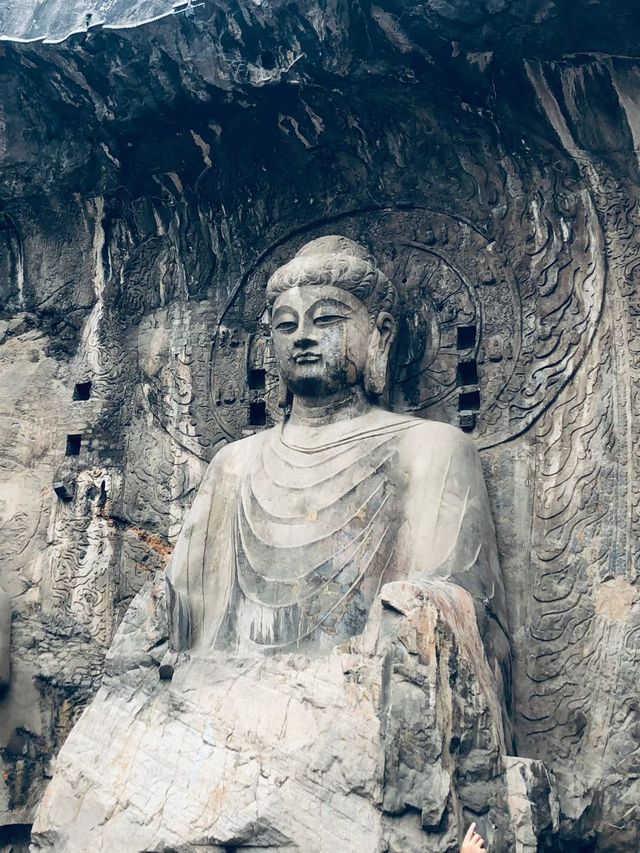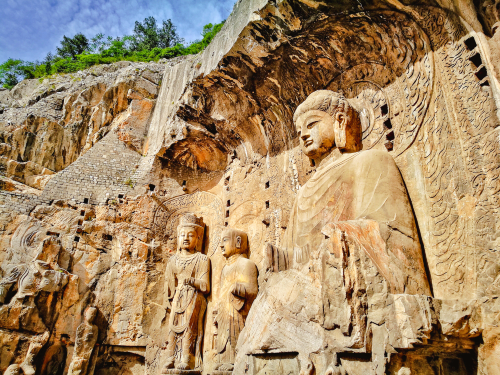App
Customer support
Find bookings
Popular Trip Moments
City Elegance Chronicles • Luoyang Edition | Luoyang Travel Must-See - Luoyi Ancient City Edition | The most stunning spot for the soul—I specifically flew to Luoyang for it! | Luoyang | Ginkgo Forest Photo Spot | The Charm of Shendu|There Is a Kind of Late Autumn Called Xiyuan Road | Luanchuan Jiuli Yunxi | Embrace Nature, Meet the Snow Season | 5-Day Fun Tour in Zhengzhou and Other Places, All You Need to Know in This Article | Luoyang Jinyun Homestay|Siheyuan as the boundary, leisure amid the bustle~ | Night Tour of Luoyang Mingtang Ancient City Lights Reenacting the Flourishing Tang Dynasty | Song County Photo Guide|Stay at this hotel, and your social circle will be buzzing | In the autumn of Jiuli Yunxi, life is lived like poetry | Luoyang Sci-Fi Park is fun and great for photos | Baiyun Mountain and Yunyan Temple Joint Free Admission Event | Departing from Zhengzhou! The Forgotten Deep Mountain Family Secret Spot | Saw the real-life Cloud Top Heavenly Palace at Laojun Mountain | Majoling at Laojun Mountain Shows a Spectacular Phenomenon | The rich autumn atmosphere, a poetic encounter at Luoshen Park | Only Henan|Understand China on this land, so shocking it leaves you speechless! | October-November at Laojun Mountain|Get the magical fairyland of red leaves and sea of clouds! | The autumn vibe is amazing!! Really, you have to see it!! | Luoyang is absolutely amazing! A time-travel journey through the Sui and Tang Ancient City that's so beautiful it brings tears to your eyes | The Chinese tallow trees at the Sui-Tang City Ruins Botanical Garden have turned red | Luoyang / Luoyang Museum | Luoyang / Yingtian Gate, Paradise, and Ming Hall | Luoyang / Tianzi Jia Liu Museum | Luoyang / Longmen Grottoes | A Must-See Guide to Enjoying Autumn Ginkgo in the Thousand-Year Imperial City of Luoyang | Luoyang Autumn Hiking – The Red Leaves of Jingzi Xianshan in Xin'an County | I found a newly opened, super affordable hotel in Luoyang! | The Ten-Mile Painted Screen of Laojun Mountain is absolutely stunning! A landscape painting brought to life
Recommended Attractions at Popular Destinations
Popular Attractions in Kuala Lumpur | Popular Attractions in Iguazu National Park(Argentina) | Popular Attractions in Walt Disney World Resort | Popular Attractions in Dubai | Popular Attractions in Paris | Popular Attractions in Los Angeles | Popular Attractions in Barcelona | Popular Attractions in Bangkok | Popular Attractions in Rome | Popular Attractions in London | Popular Attractions in Singapore | Popular Attractions in Osaka | Popular Attractions in New York | Popular Attractions in Zanzibar Island | Popular Attractions in Bali | Popular Attractions in Melbourne | Popular Attractions in Beijing | Popular Attractions in Shanghai | Popular Attractions in Sydney | Popular Attractions in Las Vegas | Popular Attractions in Tokyo | Popular Attractions in Chefchaouene | Popular Attractions in Kyoto | Popular Attractions in Phuket | Popular Attractions in West Lake | Popular Attractions in Chengdu | Popular Attractions in Florence | Popular Attractions in Madrid | Popular Attractions in Istanbul | Popular Attractions in Jungfrau Region
Popular Restaurants in Luoyang
MaJie Shan NiuRouTang Guan | Shiwei | Gaojiqingxiangyuanjueweibufan Soup | LONG LIN LU DI YI GU NIU ROU SHANG | LuoYang ZhenBuTong Restaurant (ZhongZhou East Road) | 南关小碗牛肉汤(总店) | Luoyang Shuixiyuan | Guanji Shuixi | 小气鬼烩菜(老城店) | 蜀九香火锅(华阳店) | Jiufushuixi | Xi gong fan zhuang kuai can ting ( xi gong xiao jie dian ) | 洛珠天吉民宿(老君山中灵索道店)·私房菜 | Laoluoyang Noodle House (lichun road branch) | 大刀面(升龙广场店) | 洛阳东山宾馆·宴会厅 | XIAOJIE | MAI SHENG ZHAI | 洪崖小妖重庆老火锅(洛阳总店) | 三月一十三 古风糖水铺 | 匡家驴肉汤(万安街店) | 陶陶居欢乐餐厅(行署路店) | 银哲谷神山水料理 | 明洞的夏天(泉舜店) | 老冀家饭店 | 紙貴drink | 福李记老字号豆腐汤 | Fengweilouxiaojieguotiepiaoxianghuacheng | YANTIANXIA HOTEL | 建坤水席宫(中州路店)
Popular Ranked Lists
Top 50 Must-Visit Restaurants in Athens | Top 50 Must-Visit Restaurants in Barcelona | Top 50 Luxury Hotels near Songkhla | Popular Premium Hotels in La Quinta | Top 10 Best Things to Do in Doha | Top 50 Best Things to Do in Prague | Top 10 Luxury Hotels near Hillsborough County | Top 10 Luxury Hotels near St. Joseph County | Top 50 Must-Visit Restaurants in Changsha | Top 50 Must-Visit Restaurants in Chaozhou | Top 50 Best Things to Do in Lisbon | Top 50 Must-Visit Restaurants in Fukuoka | Top 10 Local Restaurants in Lushan Global Geopark | Top 50 Must-Visit Restaurants in Melbourne | Popular Premium Hotels in Detroit | Top 10 Best Things to Do in Nagasaki | Popular Luxury Hotels in Versailles | Top 50 Luxury Hotels near Monza | Top 50 Must-Visit Restaurants in Chiang Mai | Top 50 Must-Visit Restaurants in New York | Popular Premium Hotels in Kufri | Popular Premium Hotels in Hammamet Sud | Popular Premium Hotels Near Tompkins County | Top 10 Luxury Hotels near Notre Dame | Top 10 Best Things to Do in Johor Bahru | Top 10 Best Things to Do in Phnom Penh | Top 50 Must-Visit Restaurants in Tokyo | Top 50 Best Things to Do in Cairo | Top 50 Best Things to Do in Munich | Top 50 Best Things to Do in Istanbul
About
Payment methods
Our partners
Copyright © 2025 Trip.com Travel Singapore Pte. Ltd. All rights reserved
Site Operator: Trip.com Travel Singapore Pte. Ltd.
Site Operator: Trip.com Travel Singapore Pte. Ltd.












